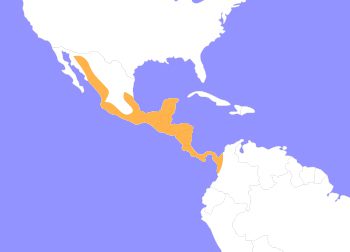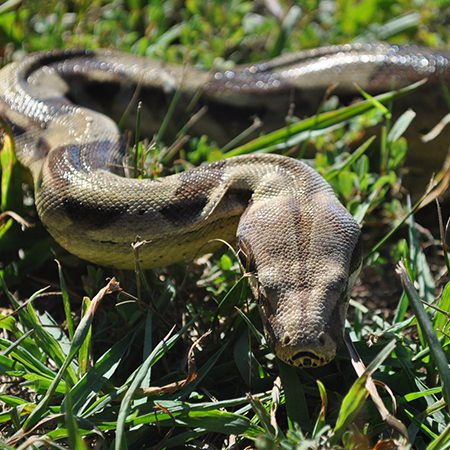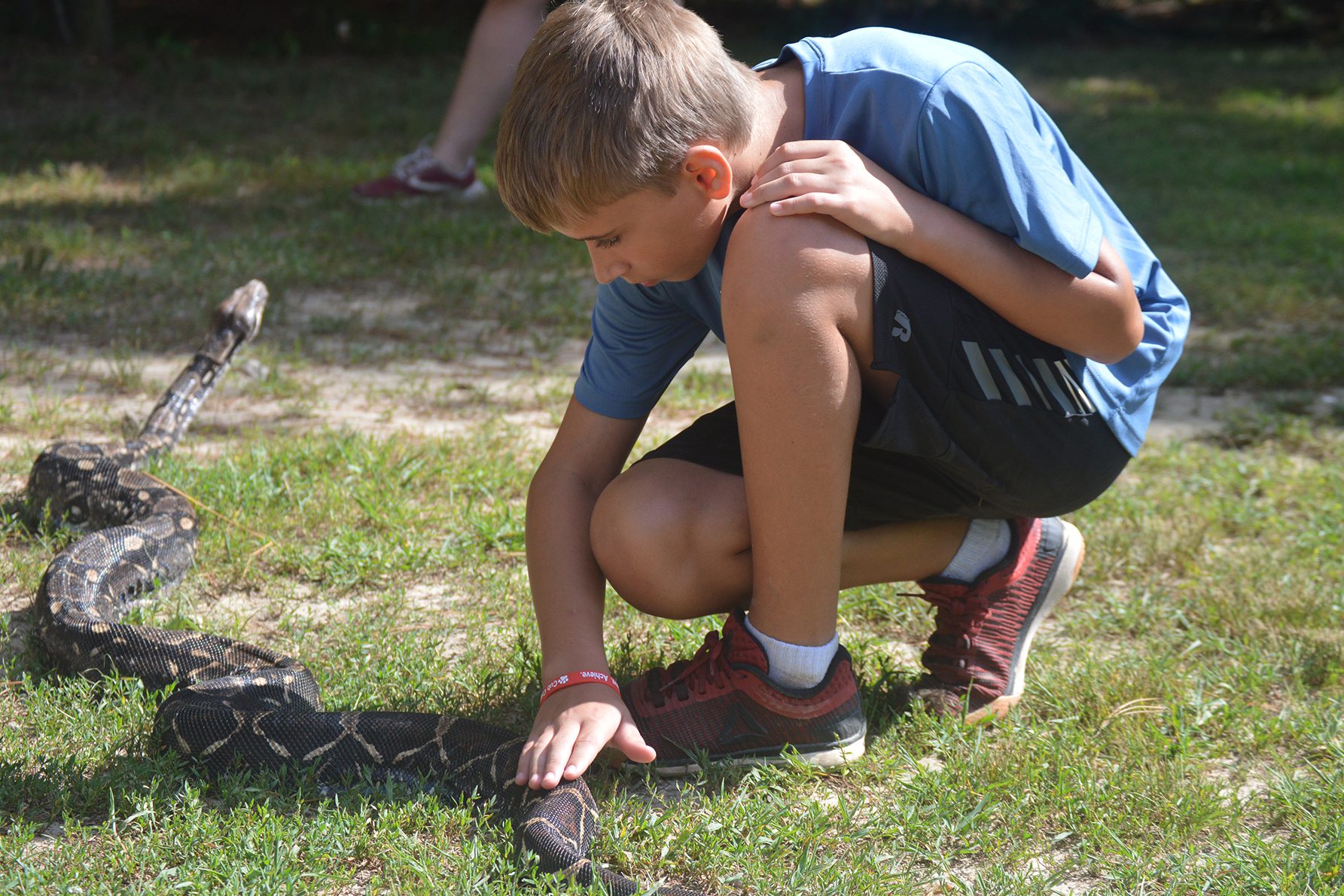Colombian Red Tail Boa
Boa constrictor imperator
Colombian Red Tail Boas are a subspecies of the standard Boa Constrictor species. Standard Red Tails are a light brownish gray in color, with darker saddle-like markings down their body. They also have dark strips on top of their head and behind their eyes. Of course, their tail is a dark red color. They have iridescent scales, meaning that when their scales get hit by sunlight, they shine like a rainbow. They are popular to keep as pets because of their docile nature and ease of handling.
These are constrictors, meaning they squeeze their prey to kill them rather than inject venom. They also do not have fangs, but rather a row of small teeth that are continuously replaced through life. In the wild, they live about 20 years, but in captivity they usually live 25-35 years. They are generally 6-9 ft long, with the females being larger, and grow continuously throughout their lives. They will weigh between 20 and 30 lbs. Coming from the Amazon rainforest, boas prefer warm, humid environments. They can climb somewhat, but their weight prevents them from getting too far up. Juveniles are more likely to be climbing than full grown adults. The classification of the various B. constrictor species is difficult and complex. There are currently 10 subspecies and several other species that look very similar, so misidentification is very common.

Colombian Red Tail Boas are found in Mexico, Central America, and South America.
HABITAT -Can be found in woodlands, grasslands, tropical forests, and semi-deserts of Central America.
DIET -They are carnivorous, mainly choosing small mammals like birds and bats.
FUN FACT -They have one nonfunctional left lung and an enlarged right lung.
SOCIAL BEHAVIOR -Tend to be solitary and territorial, are docile to humans.
ACTIVITY -They are nocturnal, meaning they are active at night.
PREDATORS -Particularly vulnerable when juveniles, they are preyed on by large reptiles, mammals, and birds.
SIZE -Average at about 8 ft in length and around 40 lbs, with females being larger than males.
RELATIVES -They are related to other constrictor snakes, such as ball pythons and reticulated pythons.
CONSERVATION -They are not evaluated by the IUCN.
Cub Creek Animal Care Information
Housing - Our snakes are housed in our Reptile room, which also features many of our lizards. They live in large heat and UV light-controlled enclosures. Fresh water and plenty of places to hide and explore are provided for them.
Diet - Once a week, our snakes are fed frozen mice that are tailored to the snake’s size. As large snakes, our red tail boas are given rats. Snakes have very slow metabolisms, so they do not need to be fed often to receive all of their necessary nutrients.
Enrichment - Reptiles do not need a lot of enrichment beyond their various hides. Our campers give them plenty of stimulation by handling them and even occasionally bringing them outside on warmer days in the summer.


